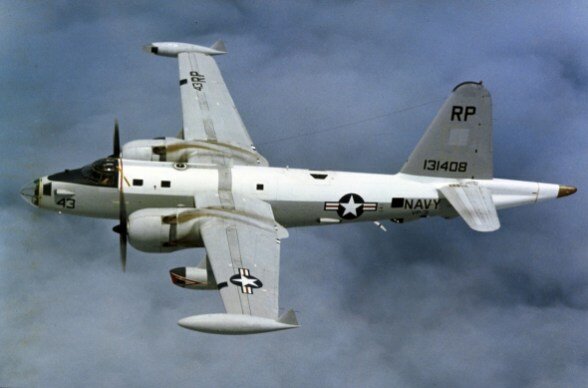Some idle thoughts to kick around:
Maritime recce/antisub planes spend much of their time cruising fairly slowly at lowish altitudes, for which high power is not needed but good economy is. They do need higher power for limited periods, for take-off and closing with a target.
So... the optimum main engine for continuous use would be the biggest, most fuel-efficient high-bypass turbofan for the cruising power required, which could be fitted into the tail of the aircraft. Just one of them, for maximum economy.
For meeting burst-power needs (and in case something happens to the main engine) small turbojets would be optimal; fuel consumption would not really be an issue, so it would be better to keep the diameter of the engines as small as possible, to minimise drag when cruising. One or two would be needed, ideally at the tail end of the plane to keep the thrust symmetrical. Depending on the layout, the possibility of a retractable fairing over the jet engine intake(s) to minimise drag might be worth considering.
I don't know if any designers have ever considered something like this.
Thoughts?
Maritime recce/antisub planes spend much of their time cruising fairly slowly at lowish altitudes, for which high power is not needed but good economy is. They do need higher power for limited periods, for take-off and closing with a target.
So... the optimum main engine for continuous use would be the biggest, most fuel-efficient high-bypass turbofan for the cruising power required, which could be fitted into the tail of the aircraft. Just one of them, for maximum economy.
For meeting burst-power needs (and in case something happens to the main engine) small turbojets would be optimal; fuel consumption would not really be an issue, so it would be better to keep the diameter of the engines as small as possible, to minimise drag when cruising. One or two would be needed, ideally at the tail end of the plane to keep the thrust symmetrical. Depending on the layout, the possibility of a retractable fairing over the jet engine intake(s) to minimise drag might be worth considering.
I don't know if any designers have ever considered something like this.
Thoughts?

